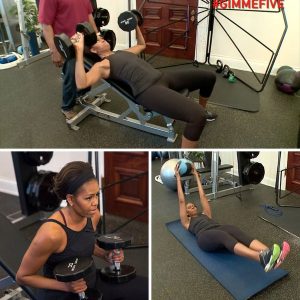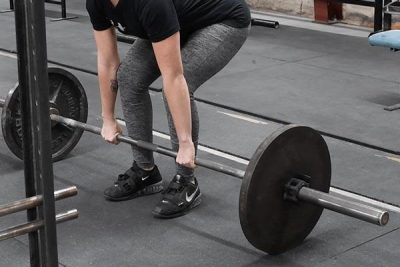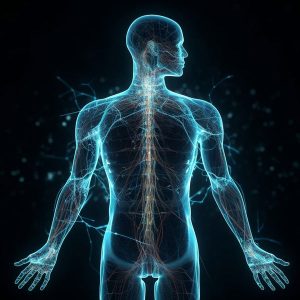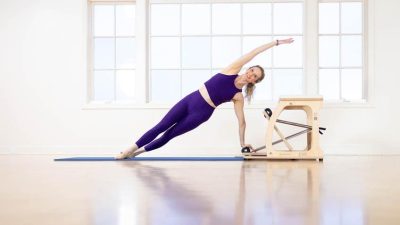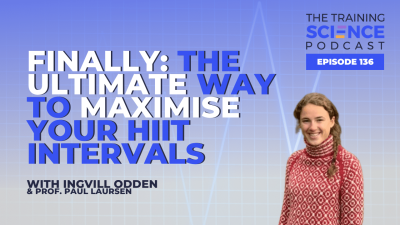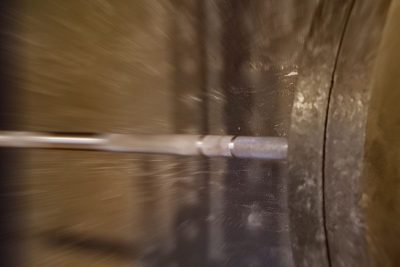
Sure, stepping on the scale can tell you how much you weigh, but that’s not the whole picture. For a more accurate look at what’s going on under your skin, a body composition test can give you a better look at your physical health.
Finding the exact ratio of fat to lean mass (muscle, bone, water) can help you set goals and give you a tangible way to track your results. There are several different avenues you can go down to find your body composition, and today, we’re going to cover the most popular ways of doing so. By the end of this article, you should understand how these tests work, the pros and cons of each, and the best choice for you. Let’s get to it.
1. Body Mass Index (BMI) (DON’T USE THIS ONE!)
We only included this one on the list because, for some strange reason, doctors still use it as a form of health measurement (even though we don’t agree with it at all).
BMI is one of the simplest methods to assess whether you’re in a healthy weight range by comparing your weight to your height. It’s calculated by dividing your weight in kilograms by the square of your height in meters. I’m sure you’ve seen the charts online or at your doctor’s office.
The big issue is that it doesn’t take into account someone with high muscle mass. So a natural bodybuilder with some decent size will register as obese. So, once again, DON’T USE THIS TO TRY AND FIGURE OUT YOUR BODY COMP!
Pros
- Easy to calculate
- Requires no special equipment
Cons
- Doesn’t distinguish between muscle and fat
- Not ideal for athletes or people with high muscle mass
Ideal for: No one. This is an outdated way of measuring fitness levels and should be phased out.
2. Skinfold Calipers

Skinfold calipers start to get a little more involved with what it takes to get some numbers. Skinfold testing involves pinching and measuring the thickness of skinfolds at specific areas of the body: the triceps, chest, midaxillary, subscapular, suprailiac, abdomen, thigh, and sometimes the biceps and calf. These measurements are usually taken three times, and the average of those three numbers is used in the formula.
The formula differs slightly for males and females, as you’ll see below:
Males
- Body Density= 1.112 – (0.00043499 x sum of skinfolds) + (0.00000055 x square of the sum of skinfold sites) – (0.00028826 x age)
- Body Fat Percentage= (495 / Body Density) – 450
Females
- Body Density= 1.097 – (0.00046971 x sum of skinfolds) + (0.00000056 x square of the sum of skinfold sites) – (0.00012828 x age)
- Body Fat Percentage= (495 / Body Density) – 450
Pros
- Inexpensive – can find calipers on Amazon for under $10
- Quick and relatively easy
Cons
- Can be inaccurate if the measurements aren’t taken in the right spot
- Doesn’t measure internal fat (visceral fat)
Ideal for:Those looking for a simple and cost-effective method that involves someone else who knows the body pretty well.
Related: BMI vs Body Fat Percentage
3. Bioelectrical Impedance Analysis (BIA)

Now, we start getting to some more modern ways of measurement. BIA equipment sends a small electrical current through the body. How fast that current travels through your body is influenced by how much water, fat, and muscle is in your body. This allows the device to estimate your body composition. Sounds cool, right? But go back and reread that; it’s an estimate, and results can be changed solely based on how hydrated you are when you get the testing done.
So, it’s not the most accurate way of testing your body composition. It also should be mentioned that it might be unlikely, but people with cardiac implants or other electronic implants should avoid BIA in case of interference with their implanted devices.
Pros
- Quick and non-invasive
- Widely available in gyms and clinics
Cons
- Not as accurate as other methods – results can vary based on hydration levels and recent exercise
- Might be dangerous for people with pacemakers
Ideal for:People looking for a rough estimate of their body composition who are comfortable with fluctuating results.
4. Dual-energy X-ray Absorptiometry (DEXA)

DEXA is the most accurate way to measure body composition, with a 98% accuracy rating. DEXA uses low-level X-rays to measure bone density, fat mass, and lean mass. It provides detailed images that show where fat is stored in your body (subcutaneous and visceral).
Though it’s not the most expensive body composition testing method, it still costs a pretty penny for a basic test. You could get lucky and find a GroupOn for something cheaper, but much of the cost will be location-dependent.
Pros
- Extremely accurate
- Can measure bone density as well as fat and muscle mass
- Provides detailed regional data (you can see which parts of your body contain higher fat levels)
Cons
- Expensive and typically requires a clinic visit
- Involves exposure to a small amount of radiation
Ideal for: People willing to spend some money to get the most accurate numbers of their body composition.
5. Hydrostatic Weighing (Underwater Weighing)

For a while, this was the most used method of body comp testing for athletes. This method involves being submerged in water to determine body density. The denser your body, the less fat you have since muscle is denser than fat.
By comparing your weight on land and your weight underwater, an estimate of your body fat percentage within 1.5%—2.8% can be made. Before DEXA, this was the way to get an accurate body fat reading.
Pros
- Highly accurate
- Was once the gold standard for measuring body fat
Cons
- Requires access to specialized equipment (often found in universities or research facilities)
- Inconvenient and somewhat uncomfortable (involves holding your breath underwater)
Ideal for: People with access to the facilities needed to perform the test can hold their breath underwater.
6. Air Displacement Plethysmography (BOD POD)

Air Displacement Plethysmography takes a similar approach to measuring body composition as hydrostatic weighing but without water. A BOD POD analyzes how much air your body displaces inside a sealed chamber.
The downside of these is 1: they are pretty scarce, so it might be quite a drive to get to one; 2: unless you have some sort of deal, it’s not cheap to have done; 3: results can be skewed by facial hair, body temperature, and even type of clothing worn.
Pros
- Mostly accurate (as long as precautions are taken)
- Non-invasive and quick
Cons
- Expensive and not as widely available as BIA or skinfold tests
- Requires sitting still in a small chamber, which might be a tad claustrophobic
Ideal for: Anyone living near somewhere offering it, and not comfortable doing a hydrostatic session.
7. 3D Body Scanners

3D body scanners are a non-invasive way of creating a model of your current body. The machines use infrared sensors to create a digital map of your body, which is then analyzed to estimate your body composition.
The downside is that its accuracy isn’t as high as other methods because it only takes an outside picture. Due to their relatively convenient nature, 3D body scans are a great way to track progress over time. Some gyms and clinics provide a scanning service, but you’ll have to research to find where they are.
Pros
- Relatively quick and non-invasive
- Great for tracking progress over time
Cons
- Accuracy can vary – unable to measure visceral fat
- Requires access to specialized equipment
Ideal for: Those mainly looking to track changes in body shape over time, with body composition numbers a second priority.
Choosing the Best Test for You
Figuring out the proper body composition test depends on several factors, including accuracy, convenience, and cost. Here’s a quick breakdown:
For the most accurate measurements:
DEXA and Hydrostatic Weighing are the gold standards but can be pricey and hard to access.
For affordability and convenience:
Skinfold Calipers and BIA are widely available but less accurate.
For detailed tracking over time:
3D Body Scanners or BOD POD provide good balance in terms of accuracy and ease.
Why Body Composition Matters
Besides making sure you’re looking your best and your weight is at a number you and your doctor are happy with, there is also the fact that health goes beyond just weight. A high body fat percentage has been linked to several increases in health risks, such as diabetes, heart disease, and even certain cancers.¹ A higher ratio of muscle mass to fat can help negate some of these risks, increase metabolic rate, and improve daily quality of life.
Tracking your body composition can also help you determine what is and isn’t working for your training, allowing you to make adjustments so you’re progressing. We all know that seeing progress is a great motivator to keep you going. For those who want to see positive changes check out our post body recomposition to lose fat while gaining muscle.
Wrap Up
Body composition tests can offer valuable insights into your physical health and fitness levels. Whether your goal is to lose fat, gain muscle, or just monitor changes in your body, there’s a method out there for you. Do your research into what services are available near you, make a budget for what you’re willing to spend, and go get it done. You may be surprised at the results.
Try our 8 Week Body Recomp Program!
References
- Lassale, Camille, et al. “Separate and Combined Associations of Obesity and Metabolic Health with Coronary Heart Disease: A Pan-European Case-Cohort Analysis.” European Heart Journal, vol. 39, no. 5, 14 Aug. 2017, pp. 397–406, https://doi.org/10.1093/eurheartj/ehx448.
